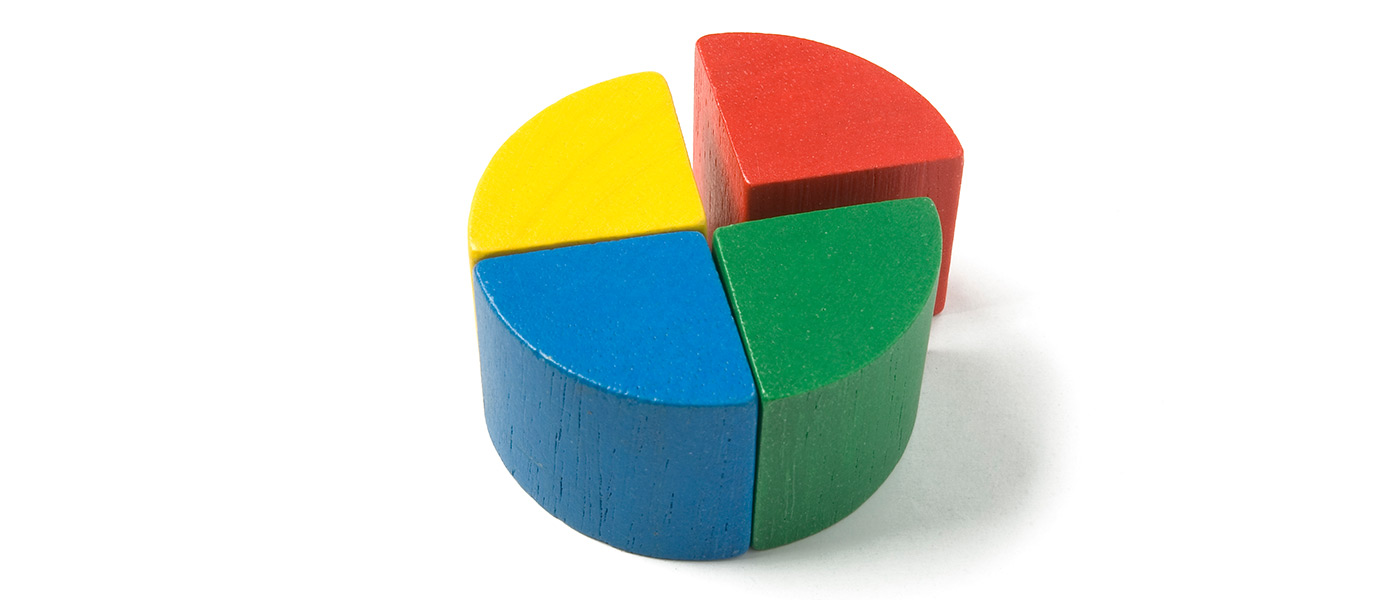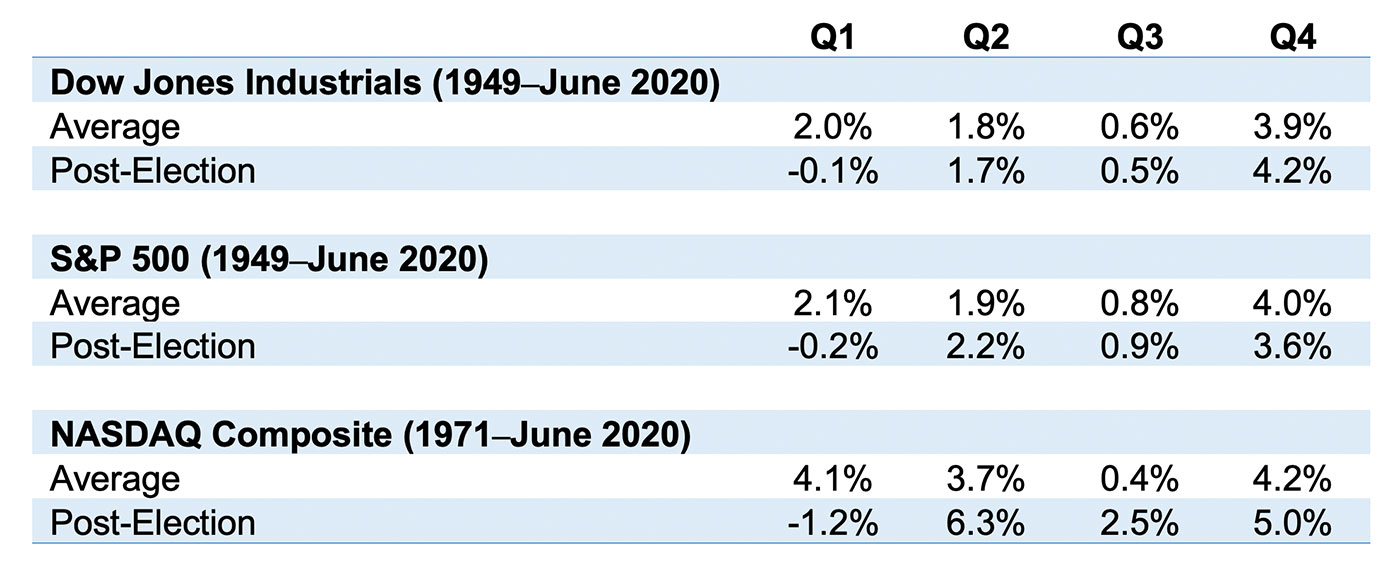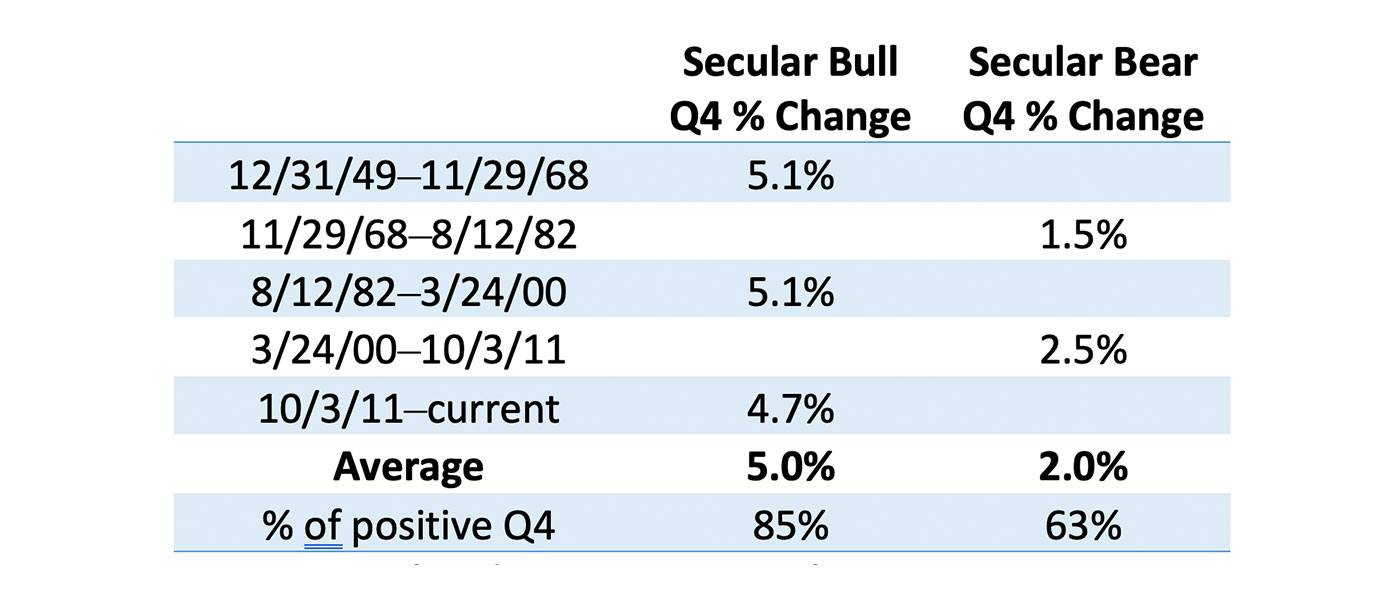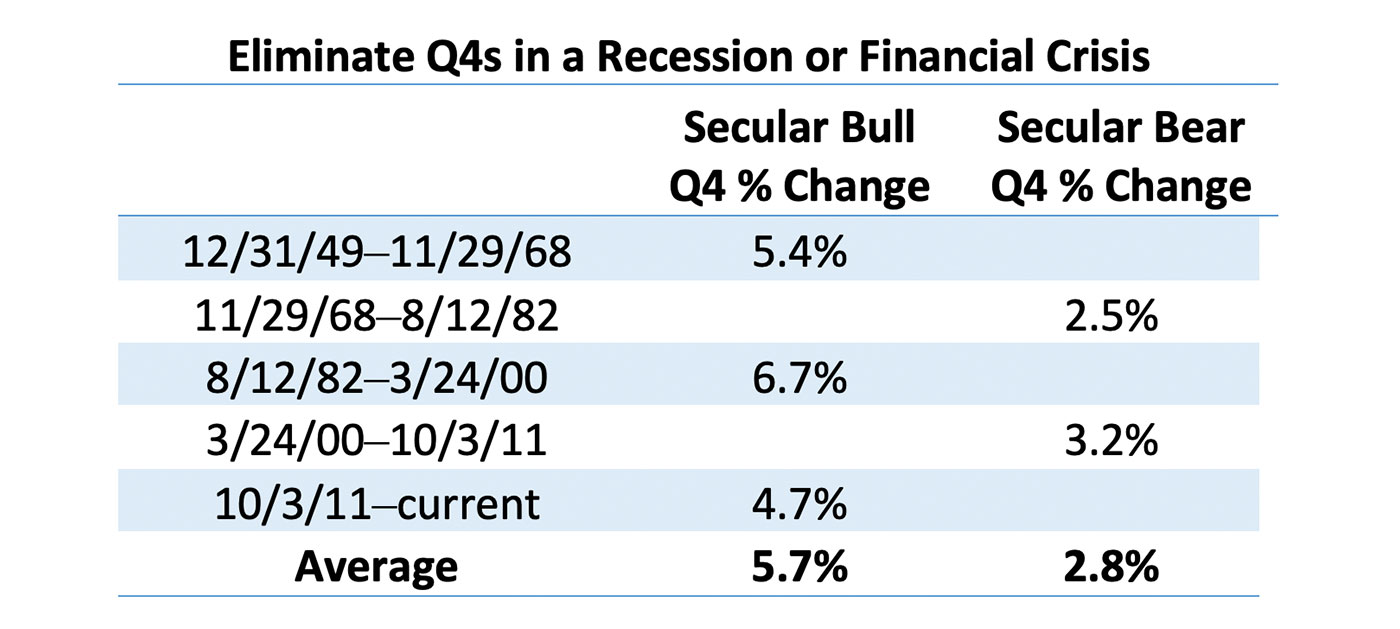

Q4 is historically strong, typically the best quarter of the year.
On average, Q4’s performance for the S&P 500 and the Dow Industrials is at least twice that of any other quarter. The NASDAQ Composite appears to march to a different drummer. Q4 is strong but not as big an overperformer on a relative basis (especially when compared to Q1 and Q2 average performance).

Sources: STIR Research, Stock Trader’s Almanac
In post-election years, the S&P’s performance has been slightly weaker than average, while the Dow and NASDAQ have fared better than average.
Historically, weakness in August and September (weaker Q3 performance) has set the stage for good market gains in Q4:
- August has been the weakest month of the year since 1987 for the Dow, S&P, and NASDAQ. (Here is an interesting trivia point: According to the Stock Trader’s Almanac, harvesting made August the best stock market month from 1901–1951.)
- With a different starting point of 1950, September ranks as the weakest month of the year for all three indexes.
Seasonal weakness in Q3 has often set the stage for new uptrends starting in Q4. October is commonly known for major downturns, but it has also been called the “bear killer,” marking the end of 12 post-WWII bear markets.
Drilling down and separating Q4’s performance between secular bull and bear markets suggests that Q4 2021 could see strong returns for the S&P 500, better than the average historical performance shown in Table 1 above.

Sources: Market data, STIR Research
Secular bulls last for decades, with a chart pattern of higher highs and higher lows consisting of a series of cyclical bull and bear markets. But they are not immune to recessions or financial crises. During the 1949–1968 secular bull, the U.S. was handicapped by three recessions. The 1,400% secular run from 1982–2000 wasn’t derailed by the financial crisis in 1987 or the recession in 1990. The current secular bull was hit hard by the 2020 pandemic-induced recession but regained its feet and charged on to new highs.
By eliminating the Q4s in a recession or financial crisis during the past secular bulls, the average gain moves higher.

Sources: Market data, STIR Research
“How overdue is the market for a correction?” is currently a popular topic. Until recently, the last market pullback over 5% occurred almost a year ago (Oct. 12, 2020–Oct. 30, 2020), a drop of 7.5%. Historically, corrections of more than 5% occur about every three to four months, and corrections of more than 10% happen about once per year. So, the data suggests that a 10% correction could occur at any time. But that data includes secular bull and secular bear markets.
However, if we look at data in secular bulls only, the picture changes. Studying the last six cyclical bull markets (including the current bull) during secular bulls (which represented 18.5 years of rising markets), the data is very different.

Sources: Market data, STIR Research
-
Corrections over 5% but less than 10% occur only every 8.5 months on average.
-
Corrections over 10% but less than 20% (which would signal the end of the bull market), occurred only three times out of 18.5 years. Only half of the cyclical bulls had a 10% correction before they eventually ended, and the other half never had a correction of 10% or greater.
-
It was not unusual for a year to go by without any correction, 5% or 10%. The 7.8-year run from 1990–1998 had two years with no corrections at all, and just one correction of more than 10%.
Corrections are welcomed and should be embraced, as they give investors excellent entry points for new money. However, waiting for a correction during a cyclical bull market within a secular bull is often a poor strategy. Investors stand to miss out on too much of the bull market gains waiting for that elusive correction.
As of the writing of this article, Democrats and Republicans are engaged in inter- and intra-party standoffs over government funding, infrastructure spending, and the government’s ability to issue debt. Pundits have produced numerous dire predictions, especially regarding the debt ceiling. This uncertainty finally produced the first 5%-plus decline since last year.
Investors now have the opportunity to buy into a meaningful dip. How deep will it go? No one has that answer. Looking at the data above, the average correction in a cyclical bull market within a secular bull market has averaged 7.9%. A correction of that magnitude would put the S&P 500 Index in the area of 4,180. Maybe that is not a bad target, as the 200-day moving average is around 4,150 and rising.
Several strategists have suggested that investors should look past any political headline-driven volatility. Q3 earnings season is upon us, and that may provide more data on the recovery and a clearer picture of what ultimately matters to stocks the most—earnings.
 Marshall Schield is the chief strategist for STIR Research LLC, a publisher of active allocation indexes and asset class/sector research for financial advisors and institutional investors. Mr. Schield has been an active strategist for four decades and his accomplishments have achieved national recognition from a variety of sources, including Barron's and Lipper Analytical Services. stirresearch.com
Marshall Schield is the chief strategist for STIR Research LLC, a publisher of active allocation indexes and asset class/sector research for financial advisors and institutional investors. Mr. Schield has been an active strategist for four decades and his accomplishments have achieved national recognition from a variety of sources, including Barron's and Lipper Analytical Services. stirresearch.com
